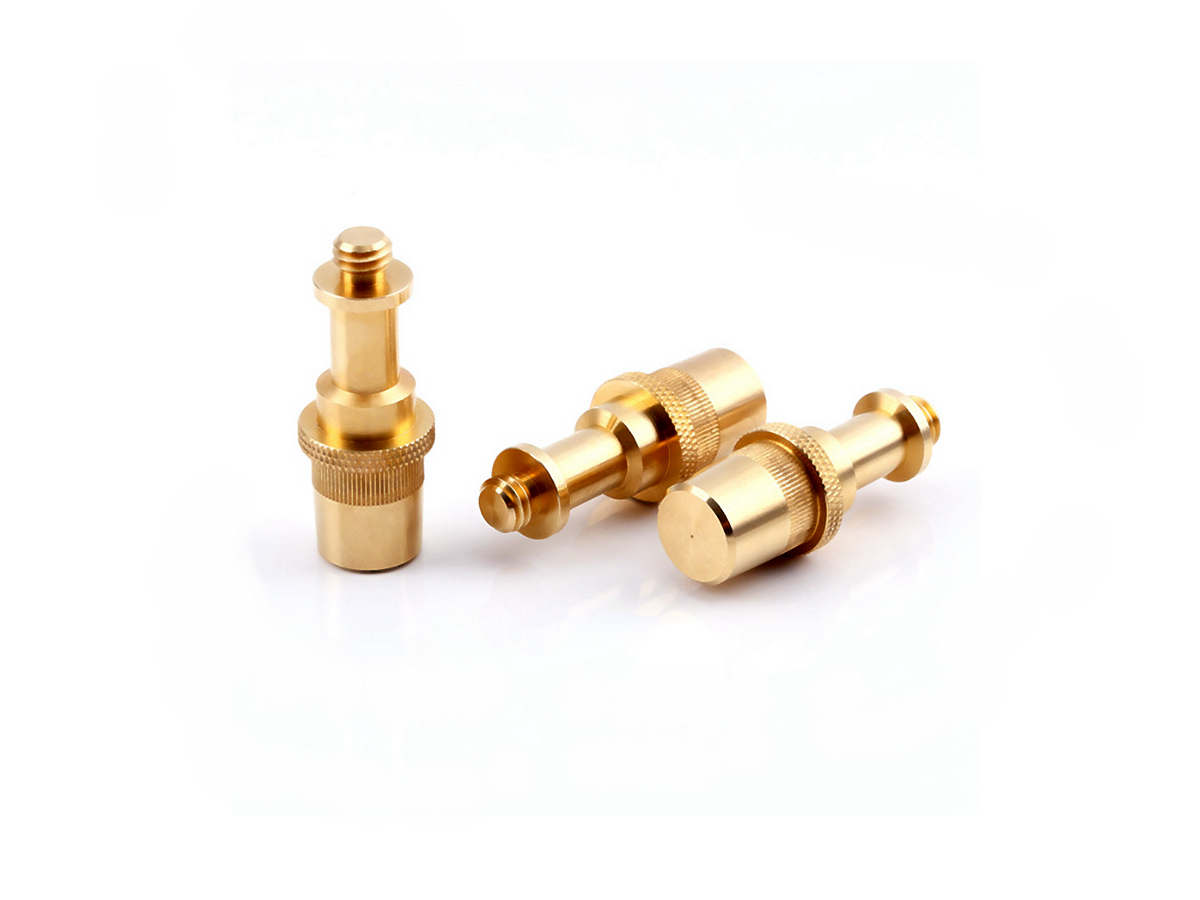Crafting Marine Hardware with CNC Machining of C46400 Naval Brass
Introduction
The marine industry demands materials capable of withstanding harsh maritime conditions, including saltwater corrosion, extreme environmental exposure, and significant mechanical stresses. C46400 Naval Brass, renowned for its exceptional resistance to seawater corrosion, high strength, and outstanding machinability, is a premier choice for crafting reliable marine hardware such as valves, propeller shafts, fittings, fasteners, and seawater pump components.
By leveraging advanced CNC machining technologies, manufacturers can produce precise C46400 Naval Brass components with tight tolerances, complex geometries, and excellent surface finishes, significantly enhancing reliability, durability, and performance in maritime applications.
C46400 Naval Brass for Marine Hardware Applications
Material Performance Comparison
Material | Tensile Strength (MPa) | Yield Strength (MPa) | Corrosion Resistance | Typical Applications | Advantage |
|---|---|---|---|---|---|
400-480 | 140-170 | Excellent (>1500 hrs ASTM B117) | Marine fittings, valves, pump components | Superior seawater corrosion resistance, machinability | |
620-760 | 275-345 | Exceptional (>1500 hrs ASTM B117) | Propellers, shafts, bearings | High strength, wear resistance | |
515-655 | 205-310 | Excellent (>1200 hrs ASTM B117) | Valves, fittings, bearings | Corrosion-resistant, high strength | |
345-400 | 140-200 | Good (≥800 hrs ASTM B117) | General marine connectors, low-load fittings | Excellent machinability, moderate corrosion resistance |
Material Selection Strategy
Selecting C46400 Naval Brass for marine hardware involves assessing mechanical properties, seawater corrosion resistance, machinability, and operational performance:
Marine fittings, valves, fasteners, seawater pumps, and general hardware exposed directly to saltwater environments benefit significantly from C46400 Naval Brass due to its superior corrosion resistance exceeding 1500 hrs in ASTM B117 salt spray tests and its ease of CNC machining.
Components such as propeller shafts and heavy-duty bearings require higher mechanical strength (up to 760 MPa tensile) and wear resistance typically opt for C63000 Aluminum Bronze.
Valves and marine fittings requiring both strength and corrosion resistance often select C95400 Aluminum Bronze for its balanced mechanical properties and reliable corrosion protection.
Non-critical connectors, fittings, and small components that prioritize ease of machining and moderate corrosion resistance often select Brass C360 for efficiency and economy.
CNC Machining Processes
Process Performance Comparison
CNC Machining Process | Dimensional Accuracy (mm) | Surface Roughness (Ra μm) | Typical Applications | Key Advantages |
|---|---|---|---|---|
±0.005-0.02 | 0.4-3.2 | Marine valves, fittings, pump bodies | Complex geometries, precise detailing | |
±0.005-0.01 | 0.4-1.6 | Shafts, cylindrical fittings, fasteners | Excellent rotational accuracy, smooth finishes | |
±0.01-0.02 | 1.6-3.2 | Precision marine fittings, valves | Accurate hole placement, controlled depth | |
±0.003-0.01 | 0.2-0.6 | Complex marine components, pump impellers | High accuracy, intricate geometries |
Process Selection Strategy
Selecting CNC machining methods for C46400 Naval Brass marine hardware requires a detailed analysis of dimensional tolerances, component complexity, and functionality:
Marine valves, pump housings, fittings, and complex structural parts needing detailed features and precision tolerances within ±0.005 mm benefit from CNC Milling Service due to its versatility in complex shaping.
Cylindrical components, shafts, and fasteners demanding strict rotational tolerances (±0.005 mm) and smooth surface finishes (Ra ≤1.6 µm) utilize CNC Turning Service.
Marine fittings, valves, and pump components requiring precise hole drilling (±0.01 mm positional accuracy) and depth control efficiently employ CNC Drilling Service for consistency and accuracy.
Components with highly intricate designs, tightest tolerances (±0.003 mm), and complex three-dimensional profiles, such as pump impellers and intricate marine fittings, use Multi-Axis CNC Machining Service for ultimate precision and structural integrity.
Surface Treatment
Surface Treatment Performance
Treatment Method | Corrosion Resistance | Wear Resistance | Marine Suitability | Typical Applications | Key Features |
|---|---|---|---|---|---|
Excellent (≥1000 hrs ASTM B117) | Moderate | Excellent | Marine valves, fittings | Enhanced surface purity, improved corrosion protection | |
Outstanding (>1500 hrs ASTM B117) | Very High (HV500-700) | Excellent | Marine connectors, shafts | Improved durability, superior wear resistance | |
Superior (>1000 hrs ASTM B117) | Very High (HV1500-2500) | Excellent | High-wear marine hardware | High hardness, reduced friction | |
Excellent (≥1000 hrs ASTM B117) | High | Excellent | Precision marine fittings, pump parts | Ultra-smooth finish, minimized corrosion risks |
Surface Treatment Selection
Selecting suitable surface treatments for marine hardware crafted from C46400 Naval Brass demands a thorough assessment of corrosion and wear requirements:
Marine valves and fittings exposed to seawater benefit from Passivation, achieving a surface purity that withstands corrosion for ≥1000 hrs (ASTM B117 salt spray test).
Marine shafts, connectors, and components subjected to friction and abrasion opt for Electroplating, enhancing surface hardness (500-700 HV) and corrosion resistance (>1500 hrs ASTM B117).
High-load and high-friction marine components, like impellers and mechanical wear parts, benefit from PVD Coating for exceptional hardness (1500-2500 HV) and reduced friction.
Precision marine fittings and pump components requiring extremely smooth finishes (Ra ≤0.2 µm) and maximum corrosion protection select Electropolishing, which minimizes surface roughness and enhances corrosion resistance.
Quality Control
Quality Control Procedures
Rigorous dimensional inspections via Coordinate Measuring Machines (CMM) and optical comparators.
Surface roughness tests were conducted with profilometers.
Mechanical property evaluations (tensile, yield, fatigue) following ASTM standards.
Corrosion resistance verification via ASTM B117 salt spray testing.
Non-destructive testing (NDT), including ultrasonic, radiographic, and magnetic particle inspections.
Comprehensive documentation is compliant with ISO 9001 and marine industry standards.
Industry Applications
Marine Hardware Applications
Marine valves, pumps, and fittings.
Propeller shafts and structural components.
Fasteners, connectors, and precision fittings.
High-performance seawater handling components.
Related FAQs:
Why is C46400 Naval Brass preferred for marine hardware applications?
How does CNC machining enhance the quality and durability of Naval Brass components?
Which CNC machining processes are ideal for producing precision marine hardware from C46400 Naval Brass?
What surface treatments best protect C46400 Naval Brass marine components from seawater corrosion?
What quality standards are required in CNC machining for marine industry components?

